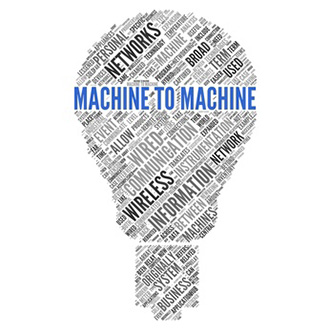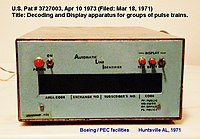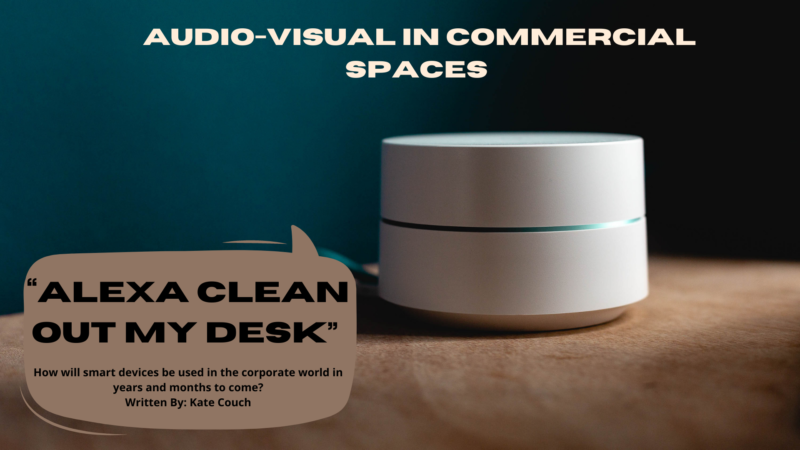Machine To Machine (M2M) Communications and IoT: A Hand in Hand Approach
 Machine to Machine (M2M) refers to technologies that allow both wireless and wired systems to communicate with other devices of the same type (Wikipedia definition). In essence, M2M refers to any technology which enables networked devices to exchange information and perform actions without direct manual assistance from human interaction. M2M communications is often used for remote monitoring. In one instance, a vending machine can message the distributor when a particular item is running low, so in this example restocking information can be transmitted. An M2M communications system becomes an important aspect of warehouse management, remote control, robotics, traffic control, logistic services, supply chain management and even telemedicine. And above all, it forms the basis for the Internet of Things.
Machine to Machine (M2M) refers to technologies that allow both wireless and wired systems to communicate with other devices of the same type (Wikipedia definition). In essence, M2M refers to any technology which enables networked devices to exchange information and perform actions without direct manual assistance from human interaction. M2M communications is often used for remote monitoring. In one instance, a vending machine can message the distributor when a particular item is running low, so in this example restocking information can be transmitted. An M2M communications system becomes an important aspect of warehouse management, remote control, robotics, traffic control, logistic services, supply chain management and even telemedicine. And above all, it forms the basis for the Internet of Things.
The key components of an M2M system include sensors, RFID, a Wi-Fi or cellular communications link and autonomic computing software programmed to help a networked device interpret data and make decisions. One major requirement for the future success of M2M, as an integral part of the IoT, will largely be determined by the successful global adoption of Internet Protocol Version 6 otherwise known as IPv6.
M2M devices that combined telephony and computing were first conceptualized by Theodore Paraskevakos while working on his caller line identification system in 1968 which was later patented in the U.S. in 1973. This system was the predecessor to what we know as Caller ID. After numerous attempts and experiments, he realized that in order for the telephone to be able to read the caller’s telephone number it must possess intelligence, so he developed the method in which the caller’s number is transmitted to the called receiver’s device.
Paraskevakos was also the first to introduce the concepts of intelligence, data processing and visual display screens into telephones which ultimately became the basis for the invention of the Smartphone. He also holds over 50 patents including one for digital vending machine communications.
One example of potential advanced M2M connectivity, beside well developed car navigation system technology, is developing automobile wireless access to vehicle electronic control units, processors that monitor and control all engine and other vehicle systems. Automotive Grade Linux (AGL) is an open source project aimed at developing a Linux-based software stack which would provide the infrastructure for a reliable (and fast) network in Internet-enabled connected cars. A brand new report on Global Connected Car M2M Connections and Services Market 2015-2019 details how analysts are forecasting the Global Connected Car M2M connections and services market will potentially grow at a compound annual growth rate of 26.19 percent over the period.
An August 2013 Forbes article Machine To Machine Connections – The Internet Of Things – And Energy, highlights a company called Axeda which creates software solutions in the cloud that product manufacturers use to collect data from their machines, analyze it, and integrate this data into their business systems. Axeda’s solutions cover asset tracking, compliance management, device management and more, Manufacturers can, for example, utilize this machine data to understand usage and behavior, build models, and figure out new ways to drive value. In the article, Axeda’s VP of marketing Dan Murphy calls M2M “the digital umbilical cord providing connectivity from the end asset to the manufacturer or service provider” and “give the manufacturer 24×7 knowledge as to what is going on with that product. The connected product is in an always-on relationship with respect to service delivery and data communication.”
One well-known company heavily involved in M2M communications is AT&T where they offer solutions to quickly and efficiently transform business processes. Customers can build custom M2M applications with AT&T’s cloud-based M2M data integration and application development platform as well as integrate M2M data into their key systems. One offering involves Smart Grid solutions which utilize the latest technology to modernize a customer’s grid, upgrade utility operations and improve customer satisfaction. This offering in smart grid technology can help utilities to:
- Increase operational efficiencies
- Remotely manage system and assets
- Gain intelligence to make better troubleshooting decisions quickly
- Optimize resources to meet demand growth and allow for future scaling
The inherent risks of M2M and thus Internet of Things technology are fairly well known by now. In the vast interconnected world of IoT, the need to provide greater security within a product or system is quickly becoming a standard requirement. Cisco, well known for their identity and position in the Internet of Things (referred to by Cisco as the Internet of Everything) market, provides security solutions for IoT-connected networks offering a wide range of physical and cyber security solutions which include:
- Cloud-based threat analysis (analytics) and advanced malware protection
- Network and perimeter cyber security solutions
- Physical safety and security solutions
- IP-based dispatch and incident response
Cisco Chief Security & Trust Officer John N. Stewart shares his insights on security and the Internet of Everything
The escalation of machine to machine applications and resulting IoT driven solutions will continue to build toward a more advanced world of robotics, connected consumer-based devices, smart home technologies, internet controlled automobiles and more. A December Internet of Things Journal article Machine-to-Machine (M2M) Market 2014-2019 spells out how telemetry, telematics & connected smart devices are driving the Internet of Things as well as the future of the M2M market.
I will be writing more in the near future on M2M and IoT including how these technologies are deployed by certain AV industry manufacturers. Along with this will be an upcoming Covergent Tech interview with a well known person from Cisco.






